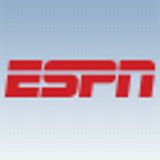ESPN’s 30 for 30 “LANCE” directed by Marina Zenovich
Part 1: 9 p.m. ET Sunday on ESPN
Part 2: 9 p.m. ET May 31 on ESPN
Streaming: ESPN App, ESPN+ and ESPN Player (where available)
Lance Armstrong, a former American road-racing cyclist, helped elevate cycling to global popularity. His seven consecutive Tour de France victories, from 1999 to 2005 — and his status as a cancer survivor, made him one of the most iconic and revered athletes outside of the professional sports world.
Yet, throughout his career, he consistently faced allegations of doping — particularly after he faced cancer and won the Tour de France a few years later.
His pro career began after winning a U.S. amateur national championship in 1991, but he placed last in his debut race — the Clásica de San Sebastian in Spain. He won his first professional race the next year and entered his first Tour de France. He won a stage but dropped out and did not finish the race. He won the Thrift Drug Triple Crown in 1993, and his fame took off shortly thereafter.
Here’s the timeline of Armstrong’s career:
1996: Armstrong becomes the first American to win the La Flèche Wallonne, and he wins a second Tour DuPont. Despite being a part of only five days of the Tour de France, he goes on to participate in the 1996 Olympic Games, finishing sixth in the time trial and 12th in the road race. In October 1996, he is diagnosed with advanced testicular cancer that had also spread to his lymph nodes, lungs, brain and abdomen.
“I intend to beat this disease, and further I intend to ride again as a professional cyclist,” he says when announcing his diagnosis. He undergoes his final chemotherapy treatment in December 1996.
1997: He establishes the Lance Armstrong Foundation (later renamed Livestrong) to support cancer patients and research. Armstrong also signs with the U.S. Postal Service’s cycling team, which would later be rebranded under a different sponsor, Discovery Channel. The ubiquitous, yellow “Livestrong” bracelets from Armstrong’s foundation would become a symbol for cancer patients and survivors everywhere.
1999: At age 27, after returning to professional cycling in 1997, Armstrong wins his first Tour de France.
“I hope it sends out a fantastic message to all survivors around the world,” Armstrong says at the finish line in Paris. “We can return to what we were before — and even better.”
He is immediately peppered with questions about doping, denying all accusations. Despite testing positive for a corticosteroid, he shows a backdated prescription to avoid sanctions. The questions don’t seem to matter; the comeback story and victory launches Armstrong to global stardom.
2000: Armstrong wins his second Tour de France, as well as a bronze medal in the time trial event at the Sydney Olympic Games. German Jan Ullrich, a chief rival of Armstrong’s, wins the gold medal in the road race and silver in the time trials.
In Armstrong’s autobiography “It’s Not About the Bike,” he provides what becomes a famous quote: “Pain is temporary. It may last a minute, or an hour, or a day, or a year, but eventually it will subside and something else will take its place. If I quit, however, it lasts forever.”
2001: Armstrong wins his third consecutive Tour de France. His rivalry with Ullrich is at its peak. Ullrich never defeats Armstrong in the Tour de France. He has more second-place finishes than any other racer.
2002: Armstrong wins his fourth consecutive Tour de France. French authorities simultaneously conclude a two-year investigation into the U.S. Postal Service team, but the investigation finds no use of performance-enhancing drugs.
2003: He wins the Tour de France again, for the fifth time. “This was my hardest win — we dodged some bullets. It was a rough year at the Tour and I don’t plan to make the same mistakes twice. But my win feels more satisfying, more than the others because of that. The crashes and near-crashes take it out of you,” Armstrong says at the finish.
2004: Armstrong wins a record-setting sixth Tour de France.
2005: At age 33, after winning a seventh Tour de France, Armstrong retires to spend more time with his family. French newspaper L’Equipe reports blood samples retested from a 1999 race show evidence of blood doping that year, but Armstrong again denies the allegations.
“If you consider my situation: a guy who comes back from arguably, you know, a death sentence, why would I then enter into a sport and dope myself up and risk my life again? That’s crazy,” Armstrong tells CNN. “I would never do that. No. No way.
2009: After announcing his return to cycling, saying he hoped to “raise awareness of the global cancer burden,” Armstrong finishes third in the Tour de France, his first race back from retirement. He also joins the RadioShack team, with intentions to again compete in the 2010 Tour de France.
2010: At the Tour Down Under, Armstrong makes his 2010 race debut, finishing 25th out of 127. At the Vuelta a Murcia in Europe, he finishes in seventh place overall, before pulling out of a handful of other races due to bouts with gastroenteritis. After a crash in the Tour de California, he places second in the Tour of Switzerland and third in the Tour of Luxembourg. In the 2010 Tour De France, which he had said would be his final, he finishes in 23rd place. However, Team RadioShack wins the team competition thanks to Armstrong’s contributions.
At the same time, American cyclist Floyd Landis, who was Armstrong’s teammate for two years and won the 2006 Tour De France, admits he used performance-enhancing drugs. In emails to U.S. and European cycling officials, Landis says he began doping in 2002 — his first year alongside Armstrong, who again denies the allegations against him, saying in May: “It’s our word against his word. I like our word. We like our credibility. Floyd lost his credibility a long time ago.”
Landis also accuses other U.S. Postal Service teammates of doping, in addition to Armstrong, and agrees to cooperate with federal officials investigating the allegations.
2011: Armstrong again announces his retirement from competitive cycling in February, at age 39, to focus on family and his cancer foundation. But the walls obscuring his past use of performance-enhancing drugs are cracking. Two other U.S. Postal team members come forward acknowledging their own PED use and further implicating Armstrong.
2012: Federal prosecutors drop their criminal investigation against Armstrong and the U.S. Postal Service team in February, with no charges filed. However, the United States Anti-Doping Agency accuses Armstrong of doping and trafficking of drugs in June. In October, the USADA formally charges him with using, possessing and trafficking banned substances and recommends a lifetime ban. In choosing not to appeal the findings, Armstrong is stripped of all of his achievements from August 1998 onward, including his seven Tour de France titles. Armstrong still publicly denies the use of performance-enhancing drugs.
2013: In a January interview with Oprah Winfrey, Armstrong finally admits to doping during each Tour de France win from 1999 to 2005.
“This story was so perfect for so long. It’s this myth, this perfect story, and it wasn’t true,” Armstrong tells Winfrey.
“I viewed this situation as one big lie that I repeated a lot of times, and as you said, it wasn’t as if I just said no and I moved off it.”
The Associated Press contributed to this story.



